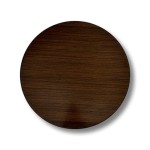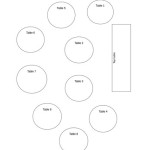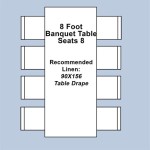How to Make Expandable Tables
Expandable tables are a powerful way to present hierarchical data in a concise and user-friendly manner. Instead of displaying all information at once, an expandable table reveals additional details only when a user explicitly requests them. This approach improves readability, reduces visual clutter, and enhances the overall user experience, especially when dealing with large datasets or complex relationships.
The fundamental concept involves displaying a primary table with summary information. Each row in this primary table acts as a trigger. When the user clicks or interacts with a specific row, it expands to reveal a secondary table or a more detailed view related to that particular row. This expansion can contain additional columns, related data, or even visualizations, all directly linked to the parent row. The expanded section remains visible until the user collapses it.
There are several methods to implement expandable tables, ranging from simple HTML and CSS solutions using JavaScript for interactivity, to more sophisticated approaches utilizing JavaScript frameworks or server-side rendering. The choice of method depends on the complexity of the data, the desired level of customization, and the overall technology stack of the project.
Implementing a Simple Expandable Table with HTML, CSS, and JavaScript
This method leverages basic web technologies to create a functional expandable table. The HTML structure defines the table and its rows, CSS provides styling, and JavaScript handles the expansion and collapse behavior. This approach is ideal for smaller datasets and projects where simplicity is prioritized.
First, the HTML structure for the table must be defined. Each row that will be expandable should be identified. A common practice is to wrap the trigger row (the row that initiates the expansion) in a `
Example HTML Structure:
```html| Column 1 | Column 2 |
|---|---|
| Row 1 - Column 1 | Row 1 - Column 2 |
|
Additional information about Row 1. |
|
| Row 2 - Column 1 | Row 2 - Column 2 |
|
Additional information about Row 2. |
|
Next, CSS styles the table and initially hides the expandable content.
Example CSS Styling:
```css table { width: 100%; border-collapse: collapse; } th, td { border: 1px solid #ddd; padding: 8px; text-align: left; } th { background-color: #f2f2f2; } .expandable-content { display: none; /* Initially hide the expandable content */ } .expandable-content.active { display: table-row; /* Show the expandable content when active */ } ```This CSS ensures the table has a standard appearance and that the `.expandable-content` rows are hidden by default. The `.active` class, when added to a `.expandable-content` row, overrides the `display: none;` property, making the content visible.
Finally, JavaScript is used to handle the expansion and collapse functionality. The JavaScript code listens for clicks on the trigger rows and toggles the `.active` class on the corresponding `.expandable-content` row.
Example JavaScript Code:
```javascript document.addEventListener('DOMContentLoaded', function() { const tableRows = document.querySelectorAll('table tbody tr:nth-child(odd)'); //Target only the trigger rows. tableRows.forEach(row => { row.addEventListener('click', function() { //Find the next sibling, which is the expandable-content row. const expandableContent = this.nextElementSibling; if (expandableContent && expandableContent.classList.contains('expandable-content')) { expandableContent.classList.toggle('active'); } }); }); }); ```This JavaScript code first waits for the DOM to be fully loaded. It then selects all the trigger rows within the table body using `querySelectorAll("tbody tr:nth-child(odd)")`. For each of these rows, an event listener is attached that listens for click events. When a click occurs, the code retrieves the next sibling of the trigger row, which is assumed to be the expandable content row. It then checks if the expandable content row exists and has the class `expandable-content`. If both conditions are true, the `active` class is toggled on the expandable content row, effectively showing or hiding it.
Using JavaScript Frameworks for Enhanced Functionality
JavaScript frameworks like React, Angular, or Vue.js provide a more structured and efficient way to create expandable tables, especially for complex applications. These frameworks offer features such as component-based architecture, data binding, and virtual DOM, which simplify development and improve performance. Using a framework allows for better management of state and complex interactions.
With React, for example, the expandable table can be implemented as a component. The component's state manages which rows are expanded. Clicking on a row updates the state, triggering a re-render that shows or hides the corresponding expandable content. Similar approaches can be used in Angular and Vue.js.
The advantage of using frameworks is the ability to manage complex data structures and interactions with greater ease. Frameworks often provide built-in mechanisms for handling events, updating the DOM, and managing asynchronous operations, which can streamline the development process.
For example, a React component might look something like this (simplified):
```javascript import React, { useState } from 'react'; function ExpandableTable({ data }) { const [expandedRow, setExpandedRow] = useState(null); const handleRowClick = (index) => { setExpandedRow(expandedRow === index ? null : index); }; return (| Column 1 | Column 2 |
|---|---|
| {row.col1} | {row.col2} |
|
{/* Detailed content for this row */}
Additional info about row {index + 1} |
|
This React component takes a `data` array as input. It uses the `useState` hook to manage the `expandedRow` state, which stores the index of the currently expanded row (or `null` if no row is expanded). The `handleRowClick` function updates the `expandedRow` state when a row is clicked. The component then maps over the `data` array to render the table rows. If the `expandedRow` state matches the current row's index, the detailed content row is rendered below it. This example is a basic illustration, and a production implementation would likely include error handling, more robust data management, and better styling.
Server-Side Rendering and Data Handling
For very large datasets or when data needs to be dynamically fetched from a server, server-side rendering (SSR) can be beneficial. SSR involves generating the HTML for the table on the server and sending it to the client. This approach can improve initial page load times and SEO, as search engines can easily crawl the pre-rendered HTML. Server-side technologies like Node.js with Express, Python with Django or Flask, or PHP can be used to generate the table HTML dynamically based on data retrieved from a database or API.
When implementing expandable tables with SSR, the server can initially send only the summary information for the primary table. When a user clicks on a row to expand it, an AJAX request is sent to the server to retrieve the detailed data for that row. The server then returns the HTML for the expanded section, which is dynamically inserted into the page using JavaScript. This approach minimizes the amount of data initially transferred to the client, improving performance.
The specific implementation of SSR depends on the chosen technology stack. However, the general principle remains the same: the server handles the data retrieval and HTML generation, while the client-side JavaScript handles the user interaction and DOM manipulation.
Consider an example using Node.js with Express. The server could have a route to fetch detailed data for a specific row, based on an ID passed in the request:
```javascript const express = require('express'); const app = express(); const port = 3000; // Mock database (replace with your actual database) const data = [ { id: 1, col1: 'Row 1 - Col 1', col2: 'Row 1 - Col 2', details: 'Detailed info for Row 1' }, { id: 2, col1: 'Row 2 - Col 1', col2: 'Row 2 - Col 2', details: 'Detailed info for Row 2' }, ]; app.get('/row-details/:id', (req, res) => { const id = parseInt(req.params.id); const row = data.find(item => item.id === id); if (row) { res.send(`${row.details}
`); // Send back the HTML for the detail section. } else { res.status(404).send('Row not found'); } }); app.listen(port, () => { console.log(`Server listening at http://localhost:${port}`); }); ```Then, on the client-side, when a user clicks a row, JavaScript sends an AJAX request to `/row-details/:id` (where `:id` is the ID of the clicked row). The server responds with the HTML for the details, which the JavaScript then inserts into the page, expanding the row.
In summary, expandable tables provide an efficient way to present complex information. The best approach for creating them depends on the project's requirements, complexity, and the technologies being used. Simple implementations are possible with HTML, CSS, and JavaScript, while JavaScript frameworks offer more robust solutions for larger applications. Server-side rendering is beneficial for handling large datasets and improving initial page load times.

Making A Table Expand Finewoodworking

2620 Expanding Table Plans Furniture Woodworking Projects Diy Dining

Making A Table Expand Finewoodworking

Best Homemade Table How To Make Your Own Extending Dining Diy

Extension Dining Table Finewoodworking

Rectangular Expandable Table Designs Core77

Making An Extendable Dining Table Using Sliding Dovetails Sorta

Free Diy Furniture Plans To Build A Cb2 Inspired Expandable Pocket Dining Table The Design Confidential

Free Diy Furniture Plans To Build A Cb2 Inspired Expandable Pocket Dining Table The Design Confidential

How To Make An Extendable Dining Table With Solid Maple Tiny Apartment Build Ep 8
Related Posts








